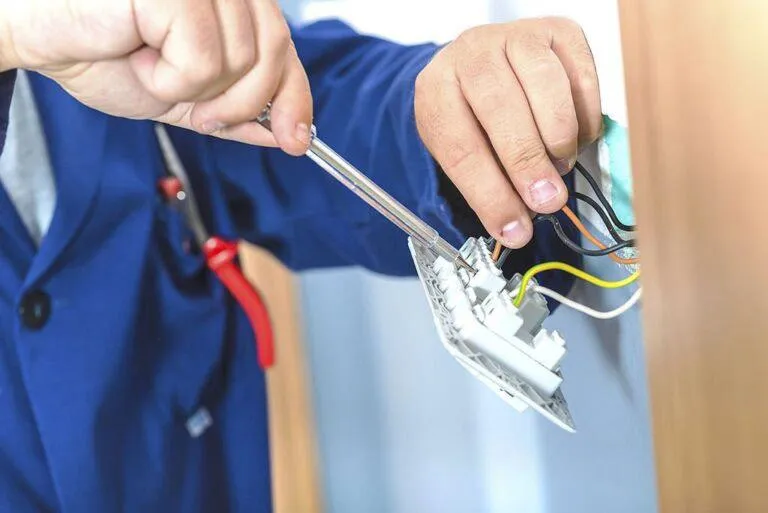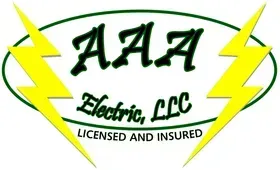Electrical Tips, Updates & Insights from AAA Electric

The Hidden Dangers of Overloaded Circuits and How to Prevent Them
Introduction
It starts innocently enough — you plug in one more space heater, charge another device, or add that extra kitchen appliance. But behind the walls, your home’s electrical system might be struggling to keep up.
Overloaded circuits are one of the most common — and most dangerous — electrical problems found in Virginia homes. They can cause flickering lights, frequent breaker trips, and, in severe cases, electrical fires.
This guide explains what circuit overloads really are, how they happen, what warning signs to watch for, and most importantly, how to prevent them. We’ll also share expert advice from AAA Electric, licensed electricians in Fishersville, VA, who help local homeowners identify and fix overload issues safely and efficiently.
What Is an Overloaded Circuit?
Every electrical circuit in your home is designed to carry a specific amount of current (measured in amps). When you plug in too many devices on the same circuit, you exceed that limit — creating what’s called an overloaded circuit.
When overloads occur, the circuit breaker trips to prevent overheating. This safety mechanism protects your wiring, outlets, and connected appliances from damage. However, if breakers frequently trip or fail to operate properly, the heat buildup can become dangerous.
Common causes of overloaded circuits include:
Running multiple high-wattage appliances (space heaters, microwaves, hair dryers) on the same outlet.
Using outdated wiring or panels not built for modern power demands.
Daisy-chaining power strips or extension cords.
Adding new appliances or electronics without upgrading your circuit capacity.
Poorly distributed loads across the home’s electrical system.
If your home was built before 1980 or hasn’t had an electrical inspection in years, it’s more likely to suffer from overloaded circuits or other wiring issues.
The Hidden Dangers of Overloaded Circuits
Many homeowners ignore flickering lights or tripped breakers, assuming they’re just annoyances. But the consequences of consistent circuit overloads can be far more serious.
1. Fire hazards
Overheating wires can ignite surrounding insulation or wall materials, leading to electrical fires. According to the National Fire Protection Association, electrical failures cause thousands of home fires annually.
2. Equipment damage
Frequent surges and voltage drops can wear out or destroy electronics, appliances, and HVAC components.
3. Electrical shock risk
Overheated outlets or damaged cords increase the risk of shock, especially in homes without modern grounding systems.
4. Circuit and panel degradation
Repeated overloads stress breakers and wiring, reducing their ability to function properly. Eventually, the system may fail entirely.
5. Higher energy costs
Overworked circuits operate less efficiently, leading to energy waste and inflated utility bills.
Preventing overloads isn’t just about convenience — it’s about protecting your home, your investment, and your safety.
How to Prevent Circuit Overloads
Avoiding electrical overloads starts with awareness and proactive maintenance. Here’s how to keep your circuits safe and efficient year-round.
1. Know your electrical limits
Each breaker in your panel is labeled with its maximum amperage — typically 15 or 20 amps for most home circuits. Avoid running multiple high-wattage devices on the same circuit.
2. Spread out appliance usage
Distribute power-hungry appliances like space heaters, coffee makers, and microwaves across different circuits.
3. Don’t rely on extension cords
Extension cords are a temporary solution, not a substitute for proper wiring. Overusing them increases both load and fire risk.
4. Schedule professional inspections
AAA Electric recommends a whole-home electrical inspection every few years, especially for older homes. Technicians can identify overloaded circuits, weak breakers, and outdated panels.
5. Upgrade your electrical panel
If you experience frequent tripping, your panel may be too small for your home’s needs. Modern 200-amp panels offer more capacity and safety features.
6. Install dedicated circuits for major appliances
HVAC units, washers, dryers, and EV chargers should have their own dedicated circuits to prevent overloading others.
7. Consider a smart electrical panel
Smart panels monitor circuit load in real time, alerting you before a problem occurs. They’re ideal for modern homes and energy-conscious homeowners.
When in doubt, always consult a licensed electrician before adding new electrical loads or rewiring circuits.
FAQs
What are the signs of an overloaded circuit?
Common indicators include tripped breakers, warm or buzzing outlets, flickering lights, and burning smells near switches or panels.
Can an overloaded circuit cause a fire immediately?
Not always — but repeated overheating weakens insulation and wiring over time, eventually leading to fire hazards.
Is it safe to reset a tripped breaker?
Yes, but if it trips repeatedly, it’s a sign of an overload or wiring issue that needs professional evaluation.
How many devices can I plug into one outlet?
It depends on wattage. Check each device’s power draw — the total on a 15-amp circuit shouldn’t exceed about 1,800 watts.
When should I call an electrician?
If breakers trip frequently, outlets feel warm, or you notice dimming lights, contact a licensed electrician immediately for inspection.
Conclusion
Overloaded circuits might seem like minor inconveniences, but they’re warning signs of a deeper problem — one that can put your home and family at risk if ignored. Preventing overloads requires understanding your system’s limits, distributing loads wisely, and keeping your wiring up to modern standards.
AAA Electric, based in Fishersville, Virginia, has been protecting local homes and businesses since 2009. Their licensed, insured electricians provide thorough inspections, panel upgrades, and circuit repairs to ensure every system runs safely and efficiently.
If your lights flicker or your breakers trip often, don’t wait until it’s too late — schedule an inspection with AAA Electric and protect your home from hidden electrical dangers.
Contact Information
2016 Jefferson Hwy Fishersville, VA 22939
Business Hours
Mon - Fri: 9:00 am - 5:00 pm
Sat - Sun: Closed
© 2025 All Rights Reserved | AAA Electric
